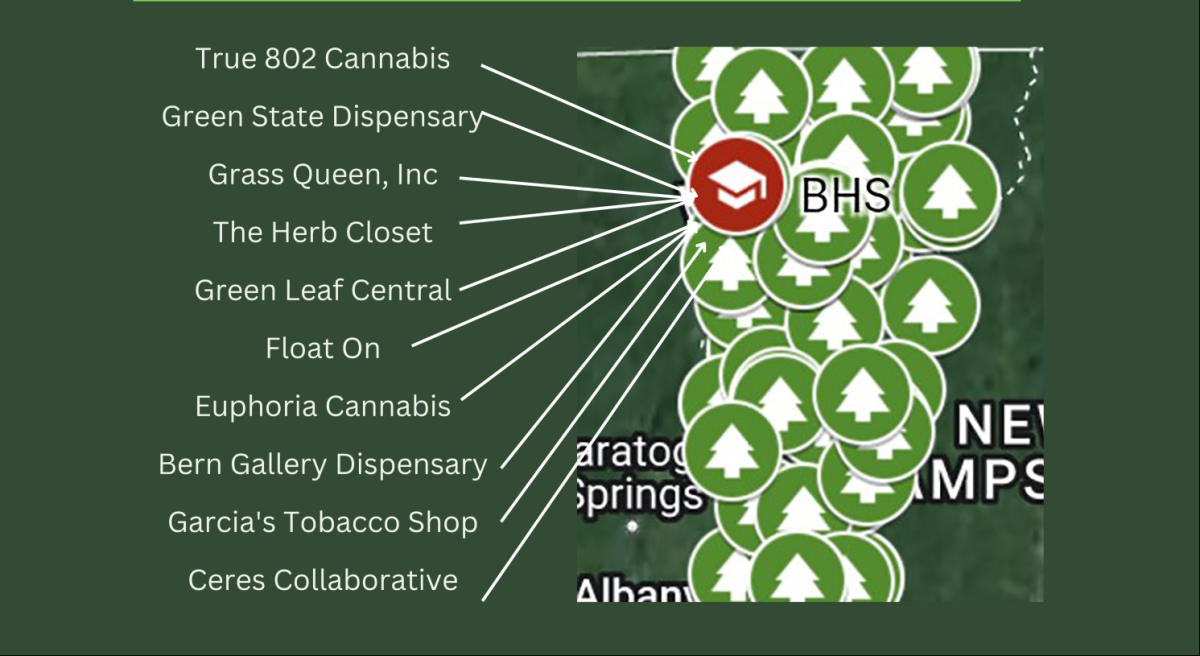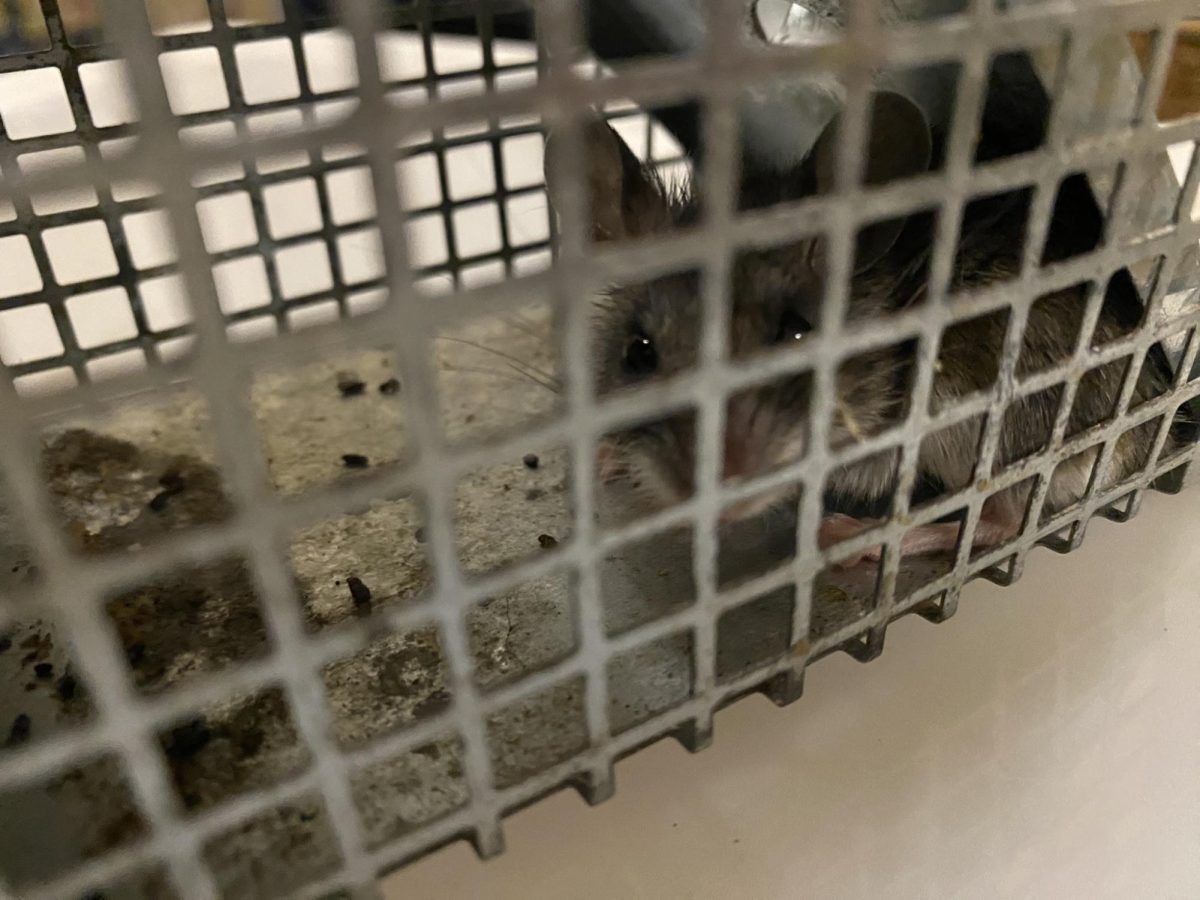Let’s talk about weed. Vermont legalized the recreational sale of marijuana in October of 2022. There are now 75 licensed retail cannabis stores in Vermont. 10 of them are within a 5 minute walk from Burlington High School.
The State of Vermont Cannabis Control Board says on their website that “the substances that kids almost always start with are alcohol, tobacco, and cannabis. Help youth delay use for as long as possible while their brains are still developing.” The Control Board suggests limiting kids’ exposure to marijuana, connecting with health and wellness programs and talking with your kids.
However, there is no evidence provided on how the legalization of marijuana may have increased cannabis use in high schoolers in the last two and half years and there is no plan in place by the Cannabis Control Board for what to do if there is an increase.
VT Cannabis Control Board Commissioner Julie Hulburd said there were a few initiatives to prevent high schoolers usage. She said there is a product registration process, as well as a couple partnerships with the Department of Health to produce flyers given out with purchases. The Department of Health used grant money to provide safe bags (lockable storage) for cannabis as well.
“You know, the impact on use, is of concern, and is part of every policy conversation that they have,” Hulburd said. “So one of the things that the legislature did was they gave the Cannabis Control Board a mission to safely, effectively and equitably implement the laws of cannabis regulation.”
Hulburd cited the VT Youth Risk Behavior Survey as the Control Board’s method for tracking student marijuana usage. However, the last results of this survey were published three years ago in 2021 – a full year before Vermont legalized recreational use of marijuana.
Counselor Ryan Nest shared his concern for a lack of quantitative data available, but said he thinks there is a correlation between the increase in usage and the legalization to sell, as there must be a trickle down effect.
“I think, especially since marijuana vapes have become such a big thing. I think it’s just easier to conceal, it’s easier to carry around,” Nest said.
Heather Washburn is a mental health counselor at BHS and said that other professionals she is in contact with believe that there’s been an increase in cannabis usage.
“[There are more] people seeking support and also an increase in violations in the last few years,” Washburn said. “So I’m not sure if it’s correlated with legalization or not, but they have been seeing an increase.”
Despite the lack of statistical evidence, the administration at BHS has noticed the high level of usage in school and is taking steps to curb usage on the premises. Faculty at BHS have been stationed around the bathrooms to discourage vape use, including marijuana vapes, commonly referred to as “carts”. Also, there are “vape detectors” in each bathroom that send a message to the administration when set off. The administrators can then review the camera footage from outside of the bathrooms in order to find and have a conversation with those students.

Students interviewed say there has been an increase in marijuana use in both high school and college and make a connection to the normalization that comes with legalization.
“Yeah, I’d say now it’s [more] normalized,” Noah Lapierre ‘26 said. “People don’t think it’s as bad as it was when it was illegal… I would say I’ve seen an uptick in, in high schoolers and people under age, having access to the substance.”

UVM senior Sydney Burek agrees.
“I mean, I feel like it definitely became a bit more acceptable,” Burek said. “So now it’s kind of the same level as alcohol.”
Both LaPierre and Burek said marijuana is relatively easy to get as well.
“It [was] easy to find those connections before it was legalized to sell,” Burek said, “[dealers] care more about getting you products and their money than caring about your age.”
An NIH “ABCD” study on the long-term effects of marijuana use on the adolescent brain (cited on The State of Vermont Cannabis Control Board website), found that “Early adolescent cannabis (before age 17) use is strongly correlated with substance use and the abuse of other illicit drug use in youth.”
“90% of people who have substance use disorders started before the age of 18,” Washburn points out.
Washburn recently started a branch of BHS Elevate. She describes it as a health and wellness campaign, focused on drugs, alcohol and education. Washburn said some of the common root causes of youth substance use are community normalization, accessibility to substances, as well as low perceptions of harm by both adults and youth.
“It can honestly be confusing to everyone, you know, both youth and adults,” Washburn said.
Burek feels at her high school, they focused a lot on underage drinking.
“We just kind of brushed over [marijuana] and grouped [it] in with hard drugs like heroin,” Burek said. “And I think that there needs to be more of a conversation and more education around weed itself.”
















